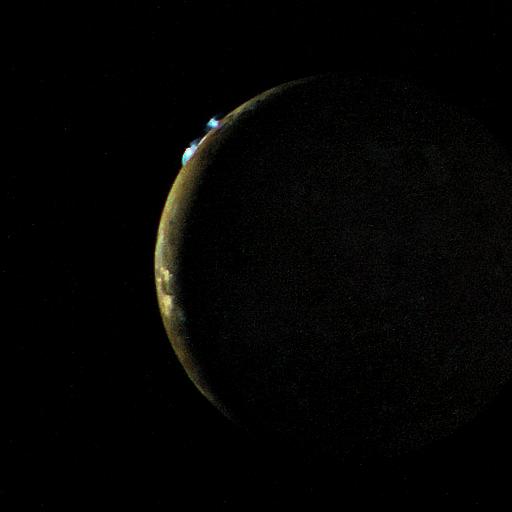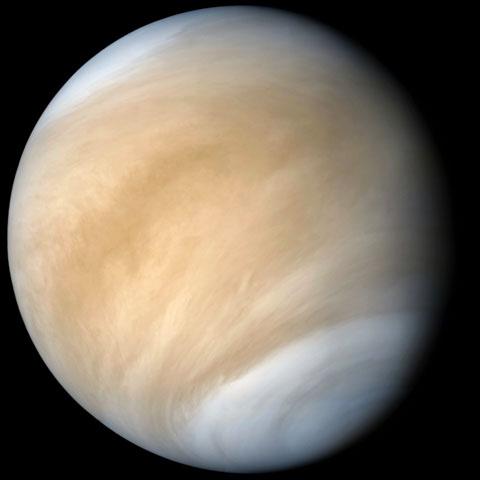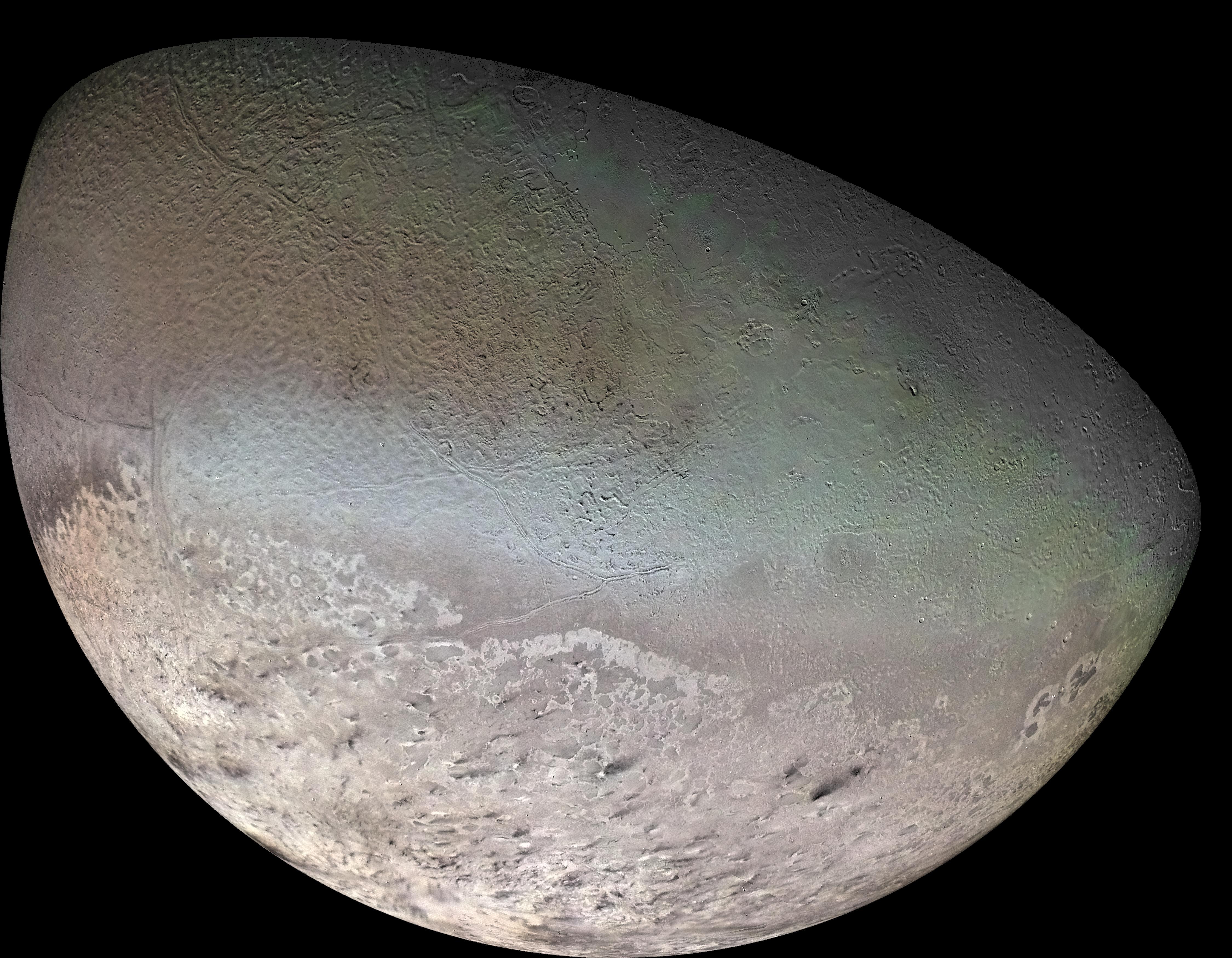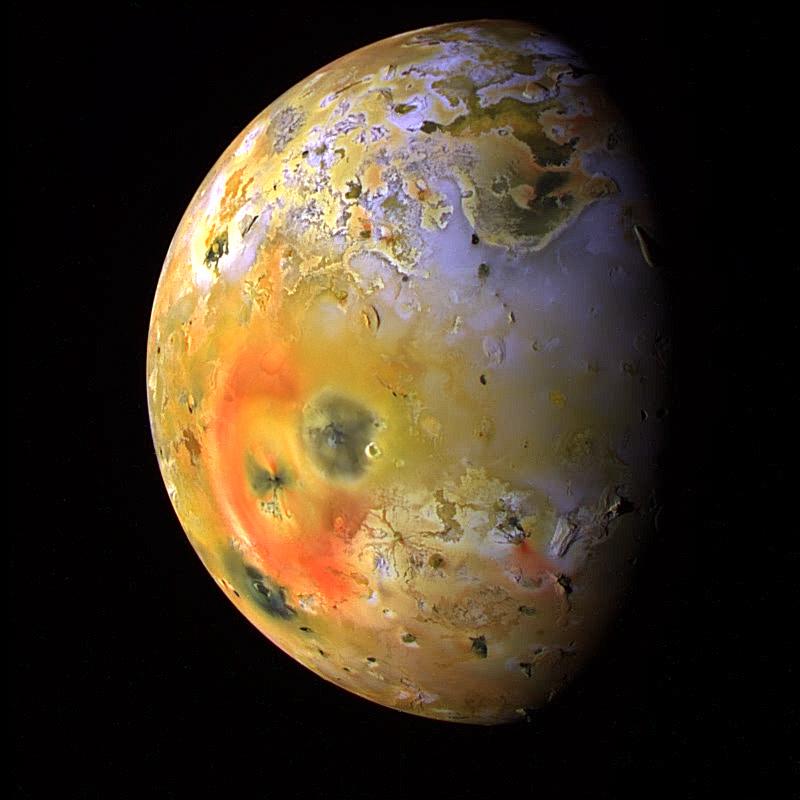Press Release
NASA Selects Johns Hopkins APL-Led Discovery Mission Proposal for Further Funding
Three Other Selections Feature APL Expertise
NASA announced today four mission proposals that will move forward for further consideration in its Discovery Program, which funds low-cost space exploration missions that do not exceed $500 million. All four mission teams feature scientists from the Johns Hopkins Applied Physics Laboratory (APL) in Laurel, Maryland, including a mission to Jupiter’s volcanic moon Io that would be designed, built and co-led by APL. The other three concept missions — two to Venus and one to Neptune’s moon Triton — include APL scientific leads.
The Io Volcano Observer, or IVO, would be the first spacecraft to exclusively explore Io, a moon that caught the attention of researchers in 1979 when Voyager 1 captured images of a volcanic plume exploding more than 180 miles (300 kilometers) high from the moon’s surface.
“Io is the most volcanically active body in the solar system,” said Lauren Jozwiak, a planetary scientist at APL and an instrument scientist on IVO. Io is only slightly larger than the Earth’s Moon, and has more than 400 volcanoes on its surface. “I’m really excited to see IVO move to this next phase. This mission will provide not only an unparalleled understanding about volcanism on Io, but more importantly, it will help us understand a key power source for planetary habitability, both in our own solar system and in others.”
Io’s spectacular volcanism arises from the combined gravitational pulls of Jupiter and two of its other moons, Europa and Ganymede. These bodies’ combined tugs literally stretch Io apart as they pass by, in turn driving an internal heat engine that keeps Io’s insides warm and surface volcanically active.
Tidal heating has important implications for habitability, such as on Europa where a potentially life-harboring subsurface ocean exists mainly because of tidal heating. Scientists expect tidal forces also play a role in exoplanets, and possibly even Earth’s history. But researchers still don’t know many details about how the process works.

Credit: NASA/JPL
Researchers are also interested in why Io is made almost entirely of rocky materials, whereas Europa and Ganymede are a combination of rock and ice. “We’re trying to figure out if Io was just dry when it formed, or if tidal heating slowly evaporated away any water,” said Kathy Mandt, a planetary scientist at APL and the project scientist for IVO. “IVO will also help solve that by studying how compounds are lost and gained on Io now.”
IVO would launch in 2026 and perform 10 close flybys of Io with the aim to address this gap using a suite of instruments, including two developed at APL: the Narrow Angle Camera, or NAC, and the Plasma Instrument for Magnetic Sounding, or PIMS. The NAC will capture high-resolution images of Io’s mountains, lava lakes and even active eruptions from its hundreds of volcanoes.
“My favorite feature of the NAC is that it will provide ‘movies’ with 1-minute time resolution of Io’s plumes,” said Jozwiak, “Can you imagine watching movies of a volcano erupting on a moon almost 400 million miles away?”
The PIMS instrument, led by APL scientist Joe Westlake, will help evaluate Io’s rich, albeit lethal, environment of high-energy particles from Jupiter’s magnetosphere and Io’s eruption of materials.
APL scientists will also be working on two concept missions to Venus that were selected: the Venus Emissivity, Radio Science, InSAR, Topography and Spectroscopy (VERITAS) mission and the Deep Atmosphere Venus Investigation of Noble gases, Chemistry and Imaging Plus (DAVINCI+).
VERITAS aims to answer why Venus, despite being nearly the same size as and having nearly the same chemical composition as Earth, took such a major detour to become one of the least habitable worlds in the solar system.

Credit: NASA
Looking for evidence of past geologic activity and water as well as scouring the surface for current volcanism and tectonics, VERITAS would provide the first high-resolution topographical maps of Venus’ surface as well as clarification on whether Venus is still geologically active.
“VERITAS is a chance to understand Venus, the once and possibly future Earth,” said Debra Buczkowski, a planetary scientist at APL and co-investigator on the mission proposal.
Meanwhile, DAVINCI+ would focus on the stew of toxic chemicals in Venus’ atmosphere. Dropping through Venus’ thick layer of clouds, the DAVINCI+ spacecraft would be the first to take detailed chemical measurements of Venus’ deep atmosphere, especially over Venus’ mountainous and geologically mysterious tessera terrain. Scientists have had outstanding questions about these since the NASA Pioneer mission launched in 1978 and the Soviet Venera missions between 1961 and 1984. DAVINCI+ will capture images of the surface on the scale of tens of centimeters; APL’s Noam Izenberg and Ralph Lorenz are co-investigators on the mission.
Finally, the Trident mission would journey to Neptune’s moon Triton, which bears a surprisingly active surface: plumes of nitrogen gas and ice, signs of underground volcanism and indications of an ocean beneath the surface. In just a single flyby, Trident would capitalize on a narrow observational window that would allow scientists to assess any changes in the activity of Triton’s plumes and surface since Voyager 2 first imaged it in 1989.

Credit: NASA/JPL/USGS
“Trident will be able to fully map the surface of Triton,” said APL’s Scott Murchie, who is a co-investigator on the mission. “This will provide an unprecedented opportunity to compare surface features on Triton now and from the past.” APL’s Kathy Mandt is also a co-investigator on the Trident mission.
The selected teams will receive NASA funding to continue developing their missions for the next 10 to 11 months, with a final decision possible in early summer 2021.
IVO is led by principal investigator Alfred McEwen at the University of Arizona in partnership with APL, the Jet Propulsion Laboratory (JPL), the United States Geological Survey (USGS), German Aerospace Center, University of Bern and UCLA.
VERITAS is led by principal investigator Suzanne Smrekar at JPL in partnership with APL, Lockheed Martin, German Aerospace Center, The National Centre for Space Studies and the Italian Space Agency.
DAVINCI+ is led by principal investigator James Garvin at NASA’s Goddard Space Flight Center in partnership with APL, Lockheed Martin, JPL, Malin Space Science Systems, NASA Langley, NASA Ames and KinetX.
Trident is led by principal investigator Louise Prockter at the Lunar and Planetary Institute in partnership with APL, JPL, the Southwest Research Institute, Ball Aerospace and others.
